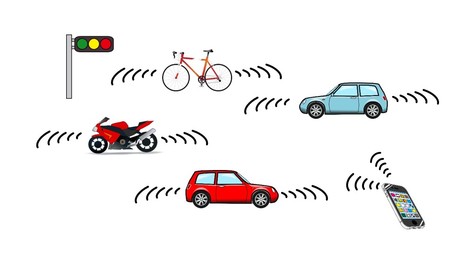Low-voltage amplifiers for automotive radars

New millimetre-wave transistor technology could make the future of driverless vehicles much safer.
Hiroshima University and Mie Fujitsu Semiconductor Limited (MIFS) have announced the development of a low-power, millimetre-wave amplifier that feeds on a 0.5 V power supply and covers a frequency range from 80 to 106 GHz.
Fabricated using MIFS’s Deeply Depleted Channel (DDC) technology, the participants say this is the first W-band (75−110 GHz) amplifier that can operate with such a low power-supply voltage.
The W-band covers the frequencies used by automotive radars. Sophisticated driver assistance and self-driving will require radars with millimetre-wave beam scanning capabilities that can ‘see’ day and night and in adverse weather conditions. Such phased arrays will comprise up to hundreds of transmitters and receivers.
Given that cars are becoming battery-operated, it is imperative that these circuits be low-powered. Lowering the voltage is the most effective means of accomplishing that. However, transistor performance drops with voltage and until now no W-band amplifier had operated at as low as 0.5 V.
The researchers successfully demonstrated the W-band amplifier by bringing together MIFS’s DDC technology and design techniques developed by Hiroshima University. DDC technology offers high-performance silicon MOS transistors that work at low voltages and improve transistor and circuit performance at millimetre-wave frequencies.
“Now that seriously low-power W-band circuits seem really possible, we should think about what we can do with them,” said Professor Minoru Fujishima, Graduate School of Advanced Sciences of Matter, Hiroshima University.
“Applications aren’t limited to automotive radars and high-speed communications between base stations. What if you have a radar on your smartphone? Today’s smartphones can already sense things like acceleration, audible sound, visible light and Earth’s magnetic field. But the only active probing device is that tiny LED that can illuminate, at most, a few metres.
“Add a millimetre-wave radar on a smartphone, and it doesn’t have to be a so-called primary radar, which only detects waves reflected back. Your smartphone could respond to waves from your friend’s radar and send some signal back. A whole lot of new applications could be created,” added Professor Fujishima
“Another significance of our 0.5 V W-band amplifier is reliability. We researchers know that some millimetre-wave circuits presented at major conferences, biased at 1 V or higher, won’t last long. They degrade as you measure them, within days or even hours, not years, because of the so-called hot-carrier effects.
“You wouldn’t want to get in a car that loses its sight so quickly. The 0.5 V supply voltage will significantly reduce hot-carrier generation,” said Professor Fujishima.
“I am delighted that our collaboration with Hiroshima University has produced a millimetre-band amplifier. We plan to move forward by building a design environment for maximising the capabilities of DDC technology,” said Mutsuaki Kai, vice president of technology development, Mie Fujitsu Semiconductor.
Details of the technology were presented at the IEEE Radio Frequency Integrated Circuits Symposium in Hawaii in June.
RFUANZ report: setting the frequency for success in 2025
Last year brought a lot of internal change for RFUANZ, but the association has hit the ground...
ARCIA update: an extended event calendar for 2025
With the addition of Tasmanian events and a conference in Adelaide in September, 2025 will see...
ARCIA update: plans for 2025
ARCIA will be holding a mixture of workshop, conference and networking events in 2025, in the...





